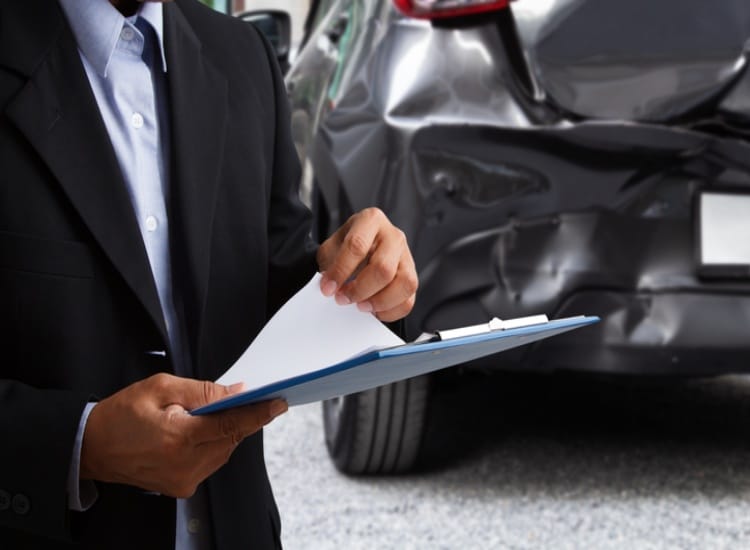Truck accidents can be devastating, often resulting in significant injuries and property damage. Understanding how fault is determined in such accidents is crucial for anyone involved, as it directly impacts the ability to claim compensation for losses. Here’s everything you need to know about determining fault in a semi-truck accident.

Understanding the Basics of Fault in a Semi-Truck Accident
In truck accidents, establishing fault revolves around proving negligence. This means demonstrating that the responsible party failed to exercise reasonable care, leading to the accident. Fault may stem from various sources, including:
- Driver negligence: This is the foundation of determining fault in a truck accident. Did the driver act in a reasonably prudent manner, or were they careless, reckless, driving under the influence, or violating traffic laws? Such behaviors could lead directly to an accident.
- Driver error: Sometimes, accidents are caused by simple mistakes on the driver’s part, such as misjudging distances or failing to adhere to safety protocols. In these cases, the driver is not malicious, but they’re still at fault.
- Maintenance provider negligence: Fault may be attributed to maintenance providers if improper repairs contributed to the accident. This includes failing to address known mechanical issues or veering from established safety standards.
- Vehicle manufacturer negligence: If the accident was caused by a vehicle defect, the manufacturer might be held liable. This includes issues like faulty brakes, tire defects, or other design flaws.
- Trucking company liability: Trucking companies can be held responsible for various reasons, including inadequate driver training, enforcing unrealistic delivery schedules that encourage speeding, or failing to maintain their fleet.
- Other motorist involvement: In some cases, other drivers may contribute to the accident by cutting off a truck, driving erratically, or failing to obey traffic laws.
Investigating a Semi-Truck Accident
The investigation aims to piece together what happened, determine fault, and seek justice for the injured parties. Key steps in this process include:
- Collecting evidence at the scene: When you’re involved in a car accident, it’s crucial to photograph vehicle damage, debris, skid marks, traffic conditions, and road signs. You should also document your injuries and collect the truck driver’s information.
- Asking for eyewitness accounts: The testimonies of people who witnessed the accident can offer invaluable insights and perspectives that may not be immediately apparent from the physical evidence alone.
- Post-accident evidence gathering: In the days and weeks following the accident, you’ll want to hire a truck accident attorney to help collect further evidence. This may include obtaining the truck driver’s electronic logging device (ELD) and the truck’s electronic control module (ECM). Your accident lawyer will also review driver training and vehicle maintenance records. Analyzing video surveillance from cameras near the accident scene is also helpful, if available.
- Accident reconstruction experts: In some cases, accident reconstruction experts are brought in to create scientific and mathematically accurate visuals, using 3D models or computer software to simulate the scenario. This offers a clear view of how the accident may have unfolded.
Proving Fault in a Semi-Truck Accident
Demonstrating fault requires the semi-truck accident attorney to establish certain elements in the case, including:
- Breach of duty of care showing that the party at fault failed to act as a reasonable person would under similar circumstances.
- Causation linking the breach of duty directly to the accident and the resultant damages.
- Modified comparative negligence. In Colorado, if a party is less than 50% responsible for an accident, they can still recover compensation, though their degree of fault reduces this amount.
Common Challenges in Determining Fault in a Semi-Truck Accident
Determining fault in truck accidents can be complex. Cases are often not straightforward because of these factors:
- Multiple parties’ involvement: Apart from the truck driver, entities like the trucking company, maintenance providers, vehicle manufacturers, and other motorists may share responsibility.
- Diverse sources of evidence: Evidence comes from various places—physical proof, digital records, and eyewitness accounts—each presenting unique collection and interpretation challenges.
- Vicarious liability: This legal concept implies that an employer can be held responsible for their employees’ actions, suggesting that the trucking company would be at fault. But not all truck drivers are employees—many are independent contractors—meaning the trucking company would escape blame.
- Complex trucking regulations: The trucking industry is governed by countless rules, complicating the ability to determine fault.
- Interstate commerce considerations: Many trucking companies operate across state lines, introducing additional legal complexities.
Contact a Fort Collins Truck Accident Lawyer
Determining fault in a semi-truck accident requires a thorough investigation and legal expertise. That’s where HSD Law comes in. We have a track record of securing substantial judgments and settlements for our clients in Northern Colorado. Our attorneys leverage experience from years of defending insurance companies, making us adept at advocating against these entities. Plus, with a no-win, no-fee policy, you only pay if you’re awarded compensation. Contact us at 970-221-2800 today for a free, no-obligation consultation at our truck accident law firm in Fort Collins.